Description
Chervil (A.K.A. French Parsley, Hedge Parsley, Garden Chervil, Cerfeuil)
50 Seeds per pack
Annual Herb
Days to Maturity: 60 Days
Sun Requirements: Partial Shade
Botanical Name: (Anthriscus cerefolium)
Chervil has been a beloved culinary and medicinal herb since ancient times, first popularized by the Romans who helped spread its cultivation across Europe. By the Middle Ages, it was commonly grown in monastery gardens, appreciated for its gentle flavor and therapeutic uses. In the United States, it began appearing in seed catalogs during the 1800s, becoming a staple in herb gardens across the country.
A cool-weather annual, chervil grows in a soft, bushy form reaching 6–10″ tall before flowering and up to 18–24″ in full bloom. Its finely cut, fern-like green leaves resemble parsley, though the texture is more delicate. In summer, tiny white blossoms emerge in airy umbels, followed by aromatic seeds. It thrives in partial shade with well-drained soil and is well-suited for containers or indoor cultivation, allowing for a steady supply of fresh leaves year-round. It may overwinter in zones 6–9 and reseeds readily, ensuring future harvests.
With a mild, slightly sweet flavor that combines notes of anise and parsley, chervil is a key ingredient in French fines herbes and a traditional addition to Béarnaise sauce. Best used fresh, it is ideal for seasoning fish, eggs, soups, potatoes, and light savory sauces. It pairs especially well with tender vegetables like asparagus or delicate meats such as poultry. Fresh leaves can also be infused into oils, blended into herb butters, or scattered over salads to enhance dishes with it subtle, delicate flavor.
Chervil is rich in vitamins A and C, calcium, potassium, magnesium, and iron. Historically, it was used as a digestive aid and mild diuretic. In medieval times, it was even believed to cure persistent hiccups—those afflicted were advised to eat an entire plant, a folk remedy that still has its believers today.
Generally trouble-free in the garden, chervil attracts beneficial insects such as hoverflies and ladybugs, helping control aphids. It’s also said to deter slugs, making it a helpful companion for lettuces and radishes.
Medical Disclaimer
Any information provided is for educational purposes and is not meant to diagnose, treat, or prevent any medical condition. Chervil is generally considered safe in moderate amounts used for culinary purposes. However, pregnant or breastfeeding women should avoid using chervil medicinally. Always consult a qualified healthcare professional before using chervil beyond ordinary food use.
Planting Instructions for Chervil Seeds
When to Plant:
Sow chervil seeds in early spring as soon as the soil can be worked and daytime temperatures stay between 55–65°F. In warmer regions, sow again in late summer for a fall crop. Succession sowing every 2–3 weeks is recommended to give extended harvests. Avoid sowing during peak summer heat, as long daylight and high temperatures cause premature bolting.
Note:
Chervil is not fully winter-hardy but may overwinter in mild climates with protection, such as cloches or cold frames.
Where to Plant:
Chervil thrives in partial shade and prefers moist, loamy soil rich in organic matter. In hot climates, select a location that offers dappled light or high shade to extend leaf production. Suitable for raised beds, containers, or directly in garden beds.
How to Plant:
Sow seeds directly onto the soil surface; do not cover them, as chervil requires light to germinate. Press seeds gently into the soil to ensure good contact. Keep the soil evenly moist but not soggy. Germination takes 10–14 days, sometimes longer in cooler weather.
Once seedlings reach 2″ tall, thin them to 12″ apart. If starting indoors, use deep containers and transplant very gently when seedlings are still small, as chervil dislikes root disturbance due to its taproot.
When to Harvest:
Begin harvesting leaves 6–8 weeks after sowing, once plants are at least 4″ tall. Pick young, tender leaves regularly for best flavor. Harvest in the morning just after dew dries for optimal flavor.
Storage and Preservation:
Chervil is best used fresh but will keep for a few days in the fridge if placed in a jar of water covered loosely with a plastic bag. For long-term storage, freeze minced leaves in oil, butter, or ice cube trays. Fast drying in a dehydrator is possible, but flavor fades quickly—store dried leaves in an airtight container and use within a year.
Seed Saving:
Chervil is a self-seeder once it bolts. To save seeds, let a few healthy plants flower and form seed heads. Harvest when the seeds turn brown and dry on the plant. Clip entire seed heads into a paper bag and let them finish drying indoors. Once dry, rub the heads to release the seeds. Store them in a cool, dry, and dark place. Chervil seeds will remain viable for 1–4 years when stored properly. We also offer seed saving envelopes for sale, with space to write the variety and harvest date—a convenient way to organize your seeds!
FAQ:
What is the historical or notable background of Chervil?
Chervil has ancient roots, first cherished by the Romans who helped spread its cultivation across Europe. By the Middle Ages, it had become a staple in monastery gardens, valued for both its culinary and medicinal uses. In the United States, it began appearing in seed catalogs during the 1800s.
How would you describe the flavor of Chervil?
Chervil offers a mild, sweet flavor with subtle hints of anise and parsley. Its delicate taste makes it ideal for enhancing dishes without overpowering other ingredients, especially in French cuisine.
What does Chervil look like, and what are its growing habits?
This cool-weather annual grows in a soft, bushy form, 6–10" tall before flowering, and up to 24" in full bloom. It has fern-like, parsley-resembling leaves and delicate white flowers in airy clusters. It thrives in partial shade and is well-suited for container or indoor gardening.
How much can I expect to harvest, and when is the best time to pick Chervil?
Chervil reaches maturity in about 60 days. For the best flavor, harvest leaves regularly before the plant flowers. Continuous cutting encourages more growth, providing a generous harvest throughout the cool season.
When is the best time to plant Chervil?
You can direct sow chervil seeds after the last frost date, or in late summer for a fall crop. Since chervil doesn’t transplant well, it's best grown by direct sowing into the garden. For a continuous harvest, sow seeds every two to three weeks through the cool season. It thrives in partial shade—especially in warmer climates—and prefers fertile, well-drained soil that stays consistently moist but not soggy.
What are the common culinary uses of Chervil?
Chervil is a vital ingredient in French fines herbes and is commonly used in Béarnaise sauce. It enhances fish, eggs, soups, and light sauces, and pairs beautifully with asparagus, poultry, or in herb-infused oils and butters.
What are the traditional medicinal uses of Chervil?
Historically, chervil was used as a gentle digestive aid and mild diuretic. It was believed to stimulate the appetite, soothe upset stomachs, and reduce water retention. Rich in vitamins and minerals like A, C, calcium, and iron, it was also valued for supporting overall health. Folk remedies included applying chervil as a poultice for skin irritations or eye inflammation, and, in a more curious tradition, it was eaten whole to supposedly cure persistent hiccups. While not all these uses are backed by modern science, chervil continues to hold a place in traditional herbal practices.
Does Chervil reseed itself in the garden?
Yes, chervil is known to reseed readily if allowed to flower and set seed. In mild climates (zones 6–9), it may even overwinter and return the following season. Letting a few plants go to seed can create a self-sustaining patch, especially in partially shaded garden beds. Just be mindful—while not invasive, it can surprise you with volunteer seedlings popping up the next spring.
Does Chervil have any natural pest resistance or benefits in the garden?
Yes, Chervil attracts beneficial insects like hoverflies and ladybugs that help control aphids. It’s also known to deter slugs, making it a useful companion plant for crops like lettuce and radishes.

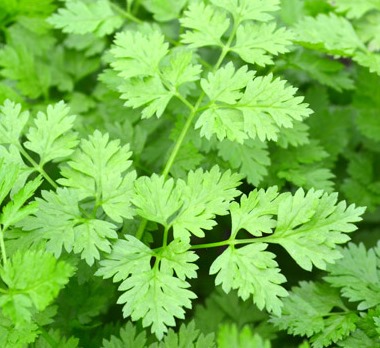

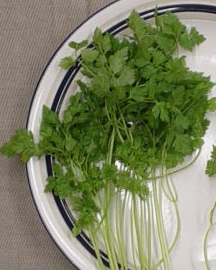











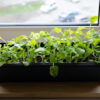
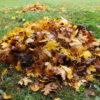
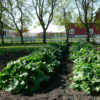


Patricia Q. (verified owner) –
Awesome seed and seed company
Barbara K. (verified owner) –
5 star!